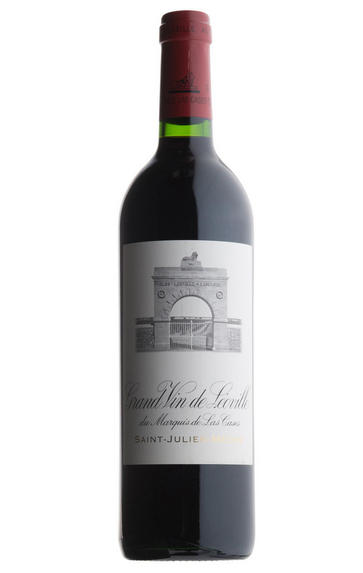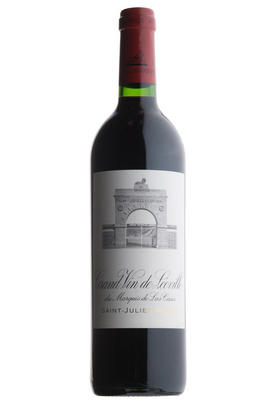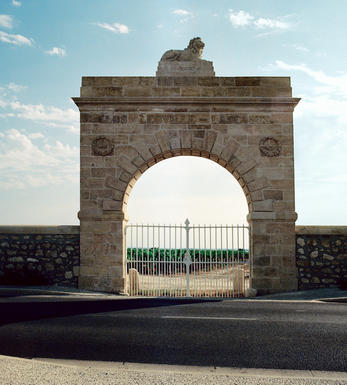
1990 Château Léoville Las Cases, St Julien, Bordeaux

Critics reviews
Tasting the 1990 Léoville Las Cases just a few days after the 1989, it is clear which is the best vintage…this one. It has a sublime nose of melted black fruit, tar, cedar and bay leaf that shrugs off the heat of that summer better than most others. At 33 years of age, you could just lose yourself in these aromatics. The palate is clearly holding up well: beautifully defined and supple yet with typical Las-Cases backbone and depth. It builds magnificently in the glass toward a harmonious finish that reminds me of the 1985 in terms of its fleshiness. Wonderful.
Drink 2023 - 2045
Neal Martin, Vinous.com (December 2023)
Carafe for sediment.
A little less vibrant in colour than the 1982, this is closer to tawny than rose, with welcoming soot and hearth smoke on the nose, and on the first palate. The fruit is plum and loganberry, softened and atumnal, with dark spice - the Petit Verdot is making its presence felt in those early years, marking it out from the post 2005 years when this grape no longer appears. Elegant and precise, with fine tannins, softens on the finish, this is in its drinking window, revs up halfway through and again has the precise elegance that makes it so much St Julien once in its mature phase. Great, but not as good as the 1982. 50% new oak. Michel Delon owner.
Drink 2023 - 2036
Jane Anson, JaneAnson.com (July 2022)
The nose of this wine had a very light whiff of TCA but not enough to distract from what is clearly a monumental wine, enlivened by the richness of the vintage. So spicy and positively throbbing with life and potential. So long!
Drink 2007 - 2036
Jancis Robinson MW, JancisRobinson.com (November 2018)
As one might expect, this is a brilliant wine, but it remains shockingly young, even for the fast evolving 1990s. Its deep ruby/purple color is accompanied by a classic, nearly restrained set of aromatics that includes notions of sweet black cherries, black currants, lead pencil, and wet stones. In the mouth, it is full-bodied, and while technically low in acidity, there is a freshness, delineation, and classicism in this full-throttle, rich, concentrated, impeccable 1990. While still youthful, it is easy to appreciate despite its substantial tannins. It is not quite as backward as the 1990 Lafite Rothschild or 1990 Latour.
Drink 2009 - 2035
Robert M. Parker, Jr., Wine Advocate (June 2009)
This is so classic, with a beautiful nose of blackcurrants, bell pepper, lead pencil, herbs, blackcurrant leaf and tobacco. Elegant and very fine. Medium-bodied with silky tannins. Turns to sweet berry fruit after a while. This has real Bordeaux soul.
Drink or hold
James Suckling, JamesSuckling.com (January 2023)
Saturated ruby-red to the rim. Bound-up but the intense nose of liquorice, blackcurrant, and chocolate, with lovely oak treatment. Brooding and unevolved on the palate, but the great extract and depth of flavour are easy to appreciate. Brilliantly delineated, thanks to sound acidity. Proprietor Delon declassified more than 60% of his crop to make this sensational wine. Endless, firm aftertaste.
Stephen Tanzer, Vinous.com (November 1993)
About this WINE

Chateau Leoville Las Cases
Château Léoville Las Cases is one of the largest and oldest classified growths in the Médoc. It is the largest of the 3 Léoville properties and now without doubt the leading estate in St-Julien.
Léoville Las Cases's 97 hectares of vineyards are superbly sited on gravelly-clay soils with the largest plot being surrounded by a stone wall and stretching between the village of St-Julien and Château Latour. The wine is a Cabernet Sauvignon dominated blend (65%), and is matured in oak barriques (70-80% new) for 18 months.
Léoville Las Cases produces arguably the most exotically perfumed wine in the Médoc and this can be partially attributed to the must being fermented at lower than average temperatures, which leads to its youthful aromatic richness being retained. On the palate it is powerful and concentrated and marvellously well-balanced.
Léoville Las Cases is a 2ème Cru Classé in name but produces 1er Cru Classé quality wines.

St Julien
St Julien is the smallest of the "Big Four" Médoc communes. Although, without any First Growths, St Julien is recognised to be the most consistent of the main communes, with several châteaux turning out impressive wines year after year.
St Julien itself is much more of a village than Pauillac and almost all of the notable properties lie to its south. Its most northerly château is Ch. Léoville Las Cases (whose vineyards actually adjoin those of Latour in Pauillac) but, further south, suitable vineyard land gives way to arable farming and livestock until the Margaux appellation is reached.
The soil is gravelly and finer than that of Pauillac, and without the iron content which gives Pauillac its stature. The homogeneous soils in the vineyards (which extend over a relatively small area of just over 700 hectares) give the commune a unified character.
The wines can be assessed as much by texture as flavour, and there is a sleek, wholesome character to the best. Elegance, harmony and perfect balance and weight, with hints of cassis and cedar, are what epitomise classic St Julien wines. At their very best they combine Margaux’s elegance and refinement with Pauillac’s power and substance.
Ch. Léoville Las Cases produces arguably the most sought-after St Julien, and in any reassessment of the 1855 Classification it would almost certainly warrant being elevated to First Growth status.
Recommended Châteaux: Ch. Léoville Las Cases, Ch.Léoville Barton, Ch Léoville Poyferré, Ch. Ducru-Beaucaillou, Ch Langoa Barton, Ch Gruaud Larose, Ch. Branaire-Ducru, Ch. Beychevelle

Cabernet Sauvignon Blend
Cabernet Sauvignon lends itself particularly well in blends with Merlot. This is actually the archetypal Bordeaux blend, though in different proportions in the sub-regions and sometimes topped up with Cabernet Franc, Malbec, and Petit Verdot.
In the Médoc and Graves the percentage of Cabernet Sauvignon in the blend can range from 95% (Mouton-Rothschild) to as low as 40%. It is particularly suited to the dry, warm, free- draining, gravel-rich soils and is responsible for the redolent cassis characteristics as well as the depth of colour, tannic structure and pronounced acidity of Médoc wines. However 100% Cabernet Sauvignon wines can be slightly hollow-tasting in the middle palate and Merlot with its generous, fleshy fruit flavours acts as a perfect foil by filling in this cavity.
In St-Emilion and Pomerol, the blends are Merlot dominated as Cabernet Sauvignon can struggle to ripen there - when it is included, it adds structure and body to the wine. Sassicaia is the most famous Bordeaux blend in Italy and has spawned many imitations, whereby the blend is now firmly established in the New World and particularly in California and Australia.


Buying options
Add to wishlist
Description
Tasting the 1990 Léoville Las Cases just a few days after the 1989, it is clear which is the best vintage…this one. It has a sublime nose of melted black fruit, tar, cedar and bay leaf that shrugs off the heat of that summer better than most others. At 33 years of age, you could just lose yourself in these aromatics. The palate is clearly holding up well: beautifully defined and supple yet with typical Las-Cases backbone and depth. It builds magnificently in the glass toward a harmonious finish that reminds me of the 1985 in terms of its fleshiness. Wonderful.
Drink 2023 - 2045
Neal Martin, Vinous.com (December 2023)
wine at a glance
Delivery and quality guarantee